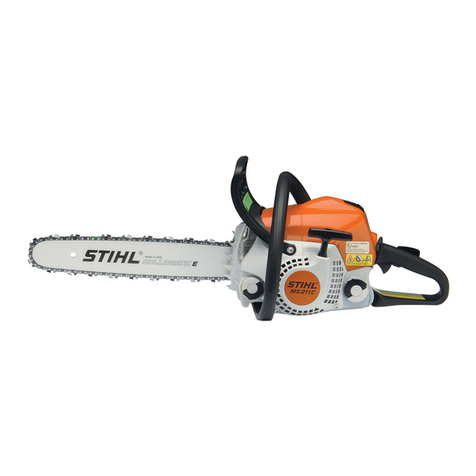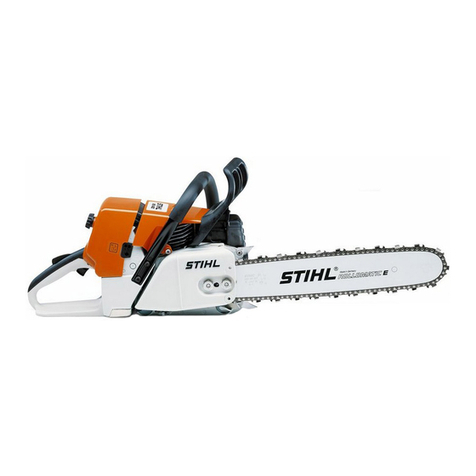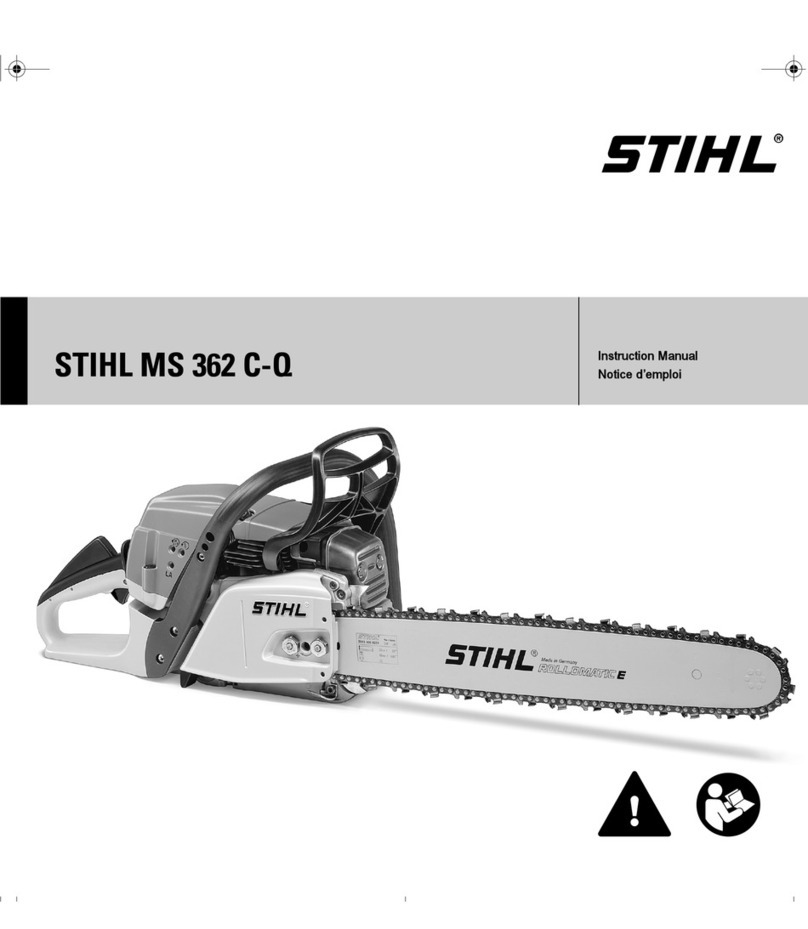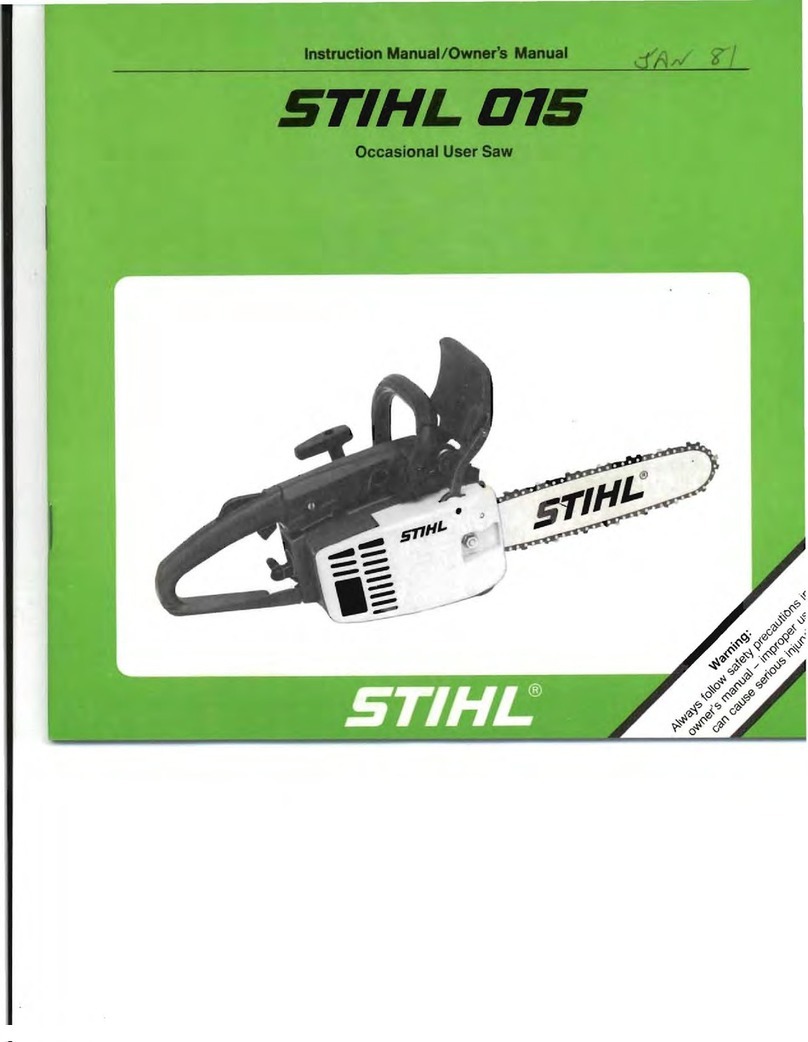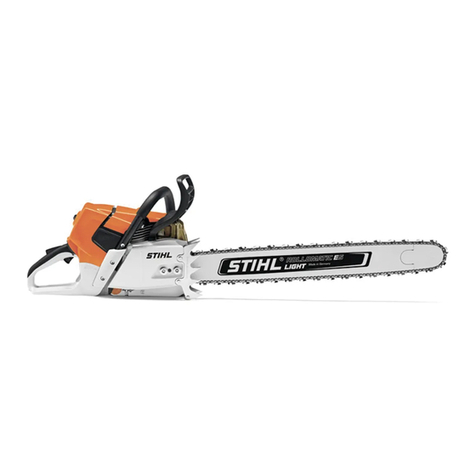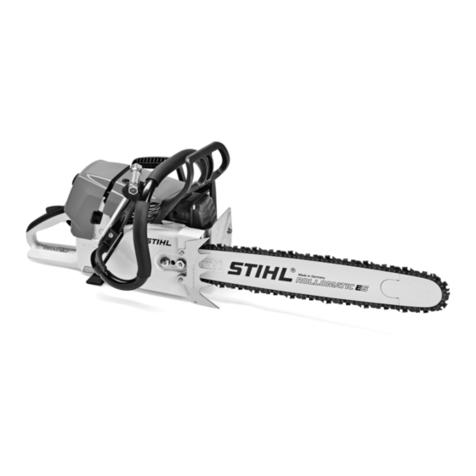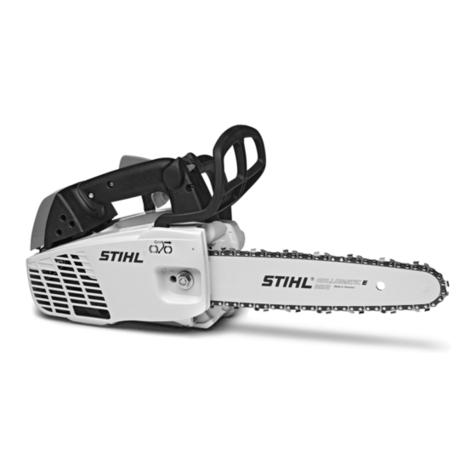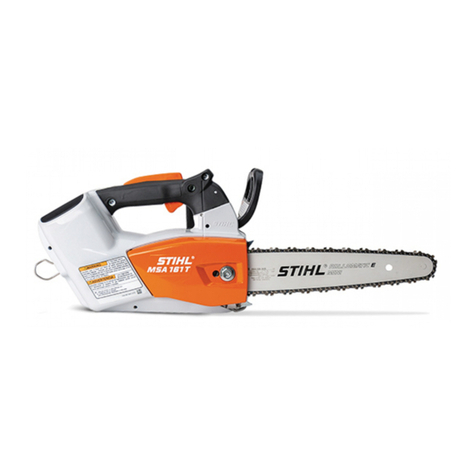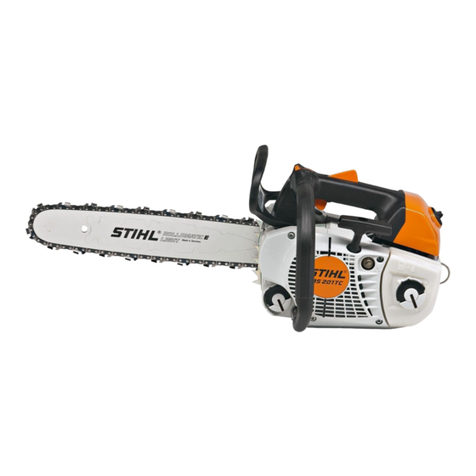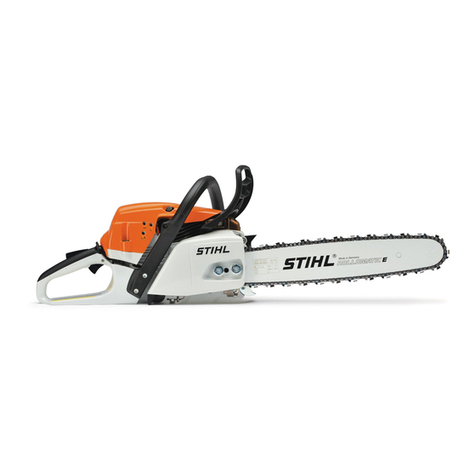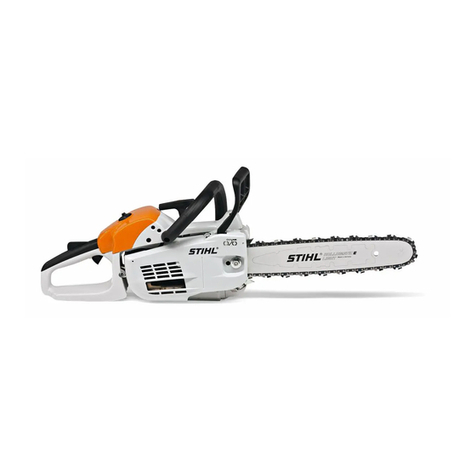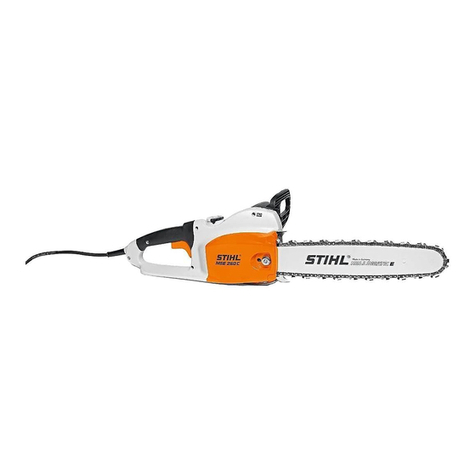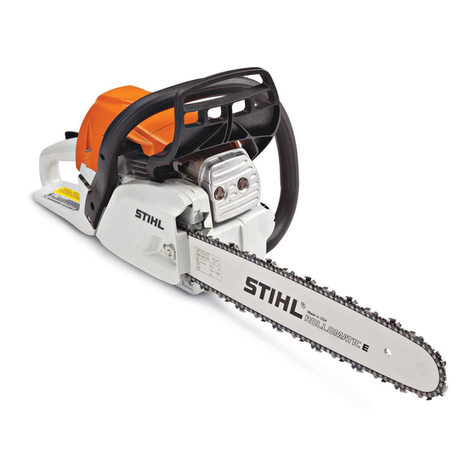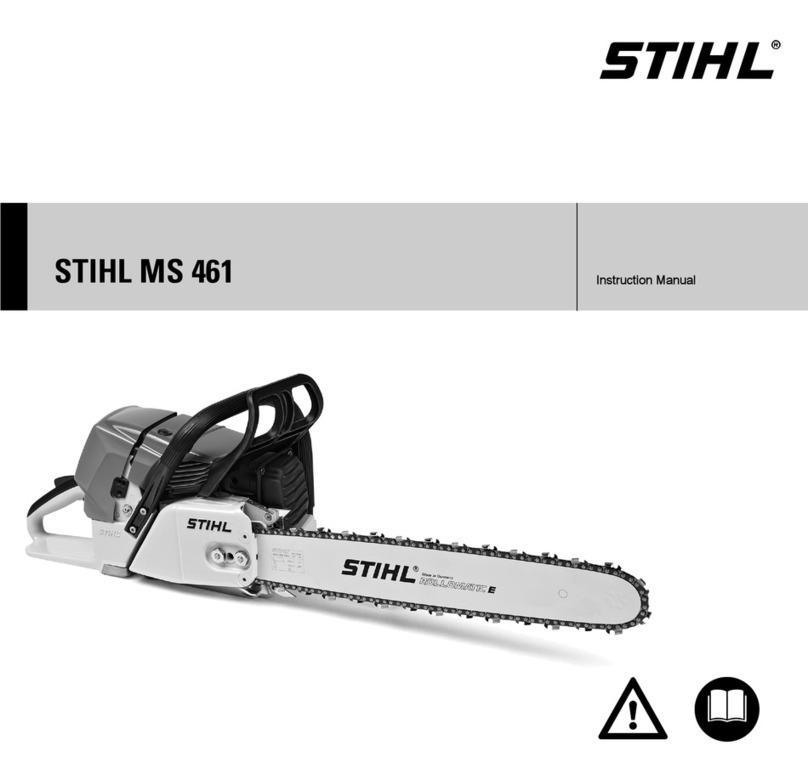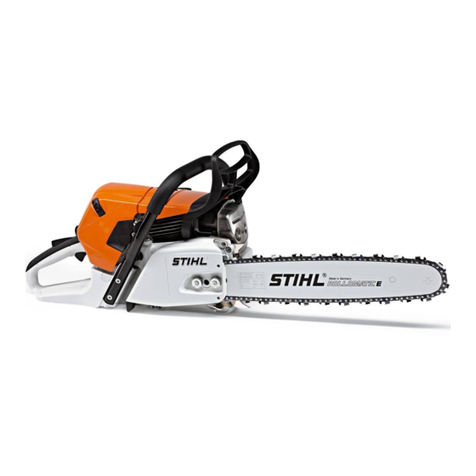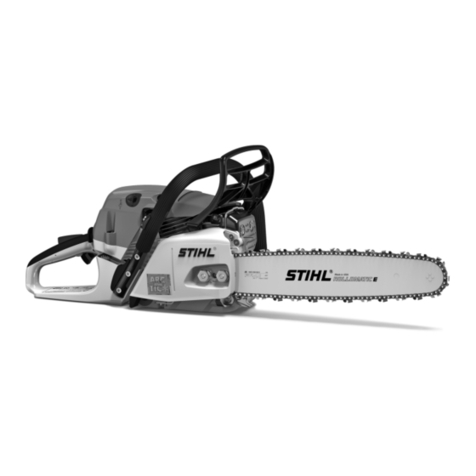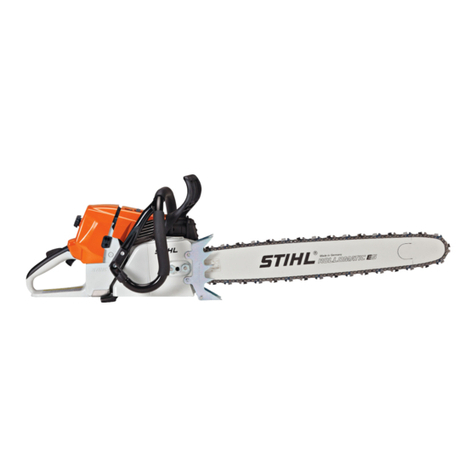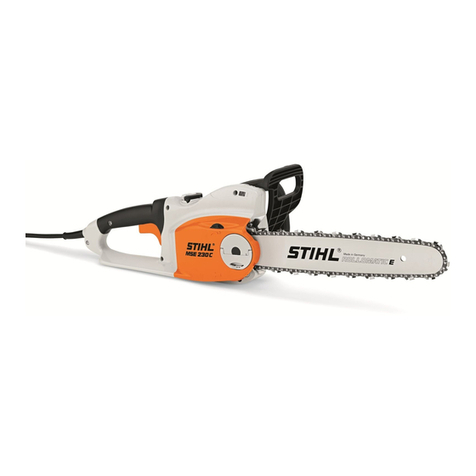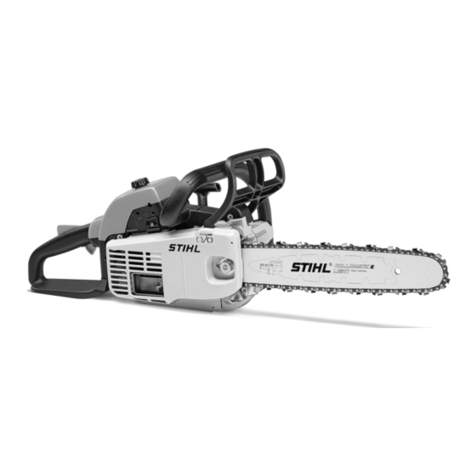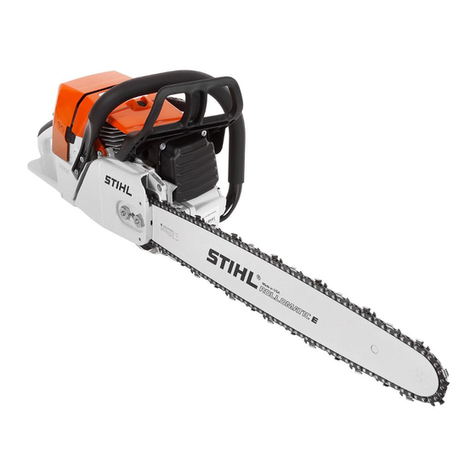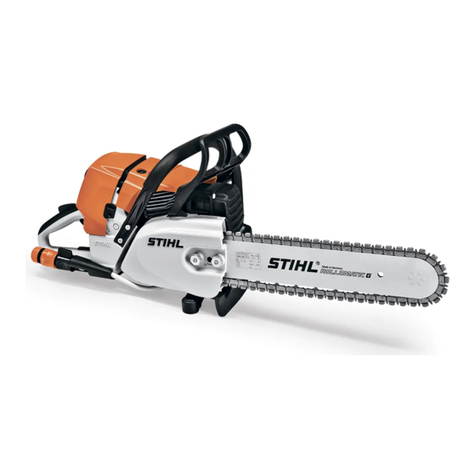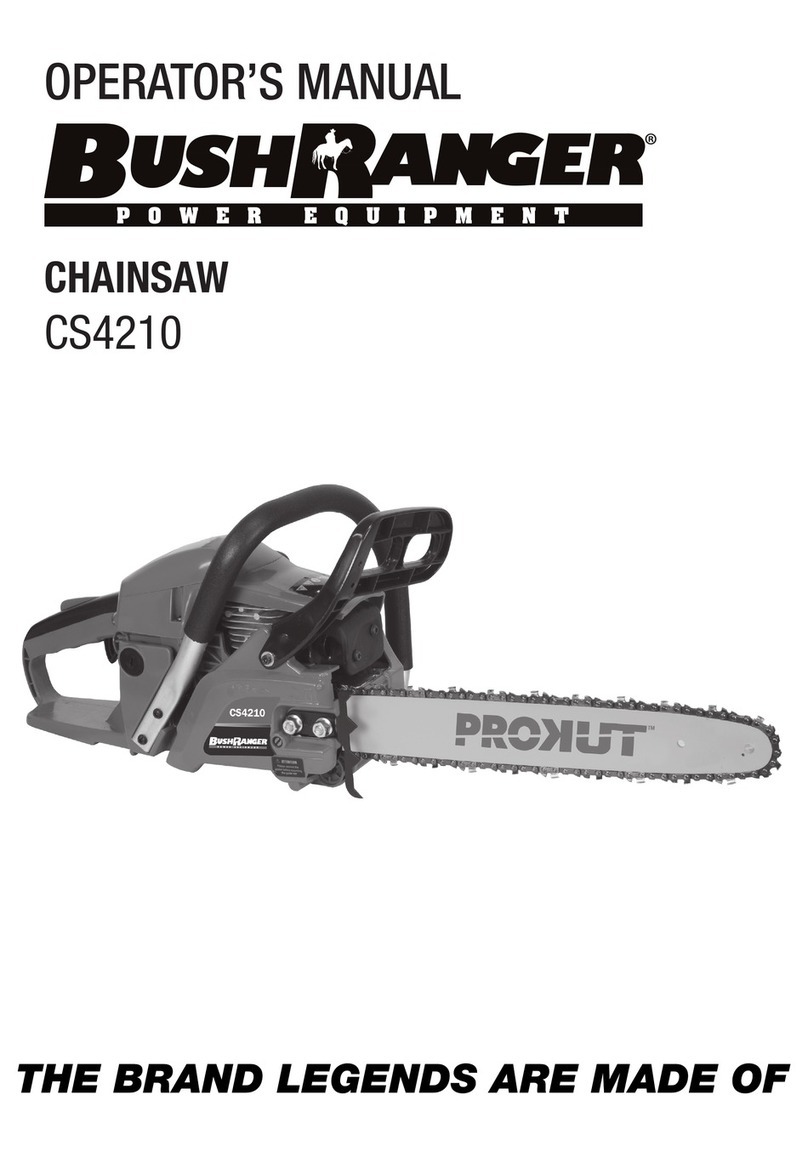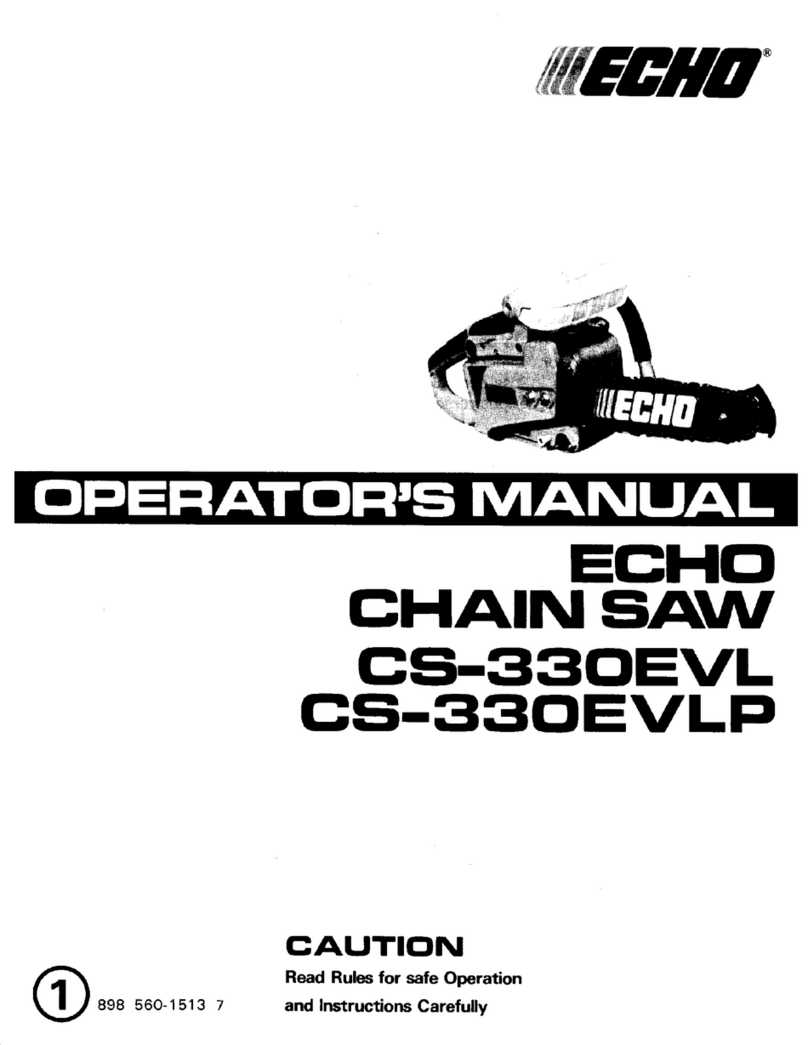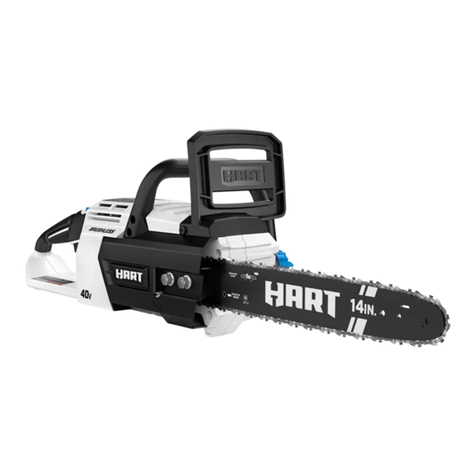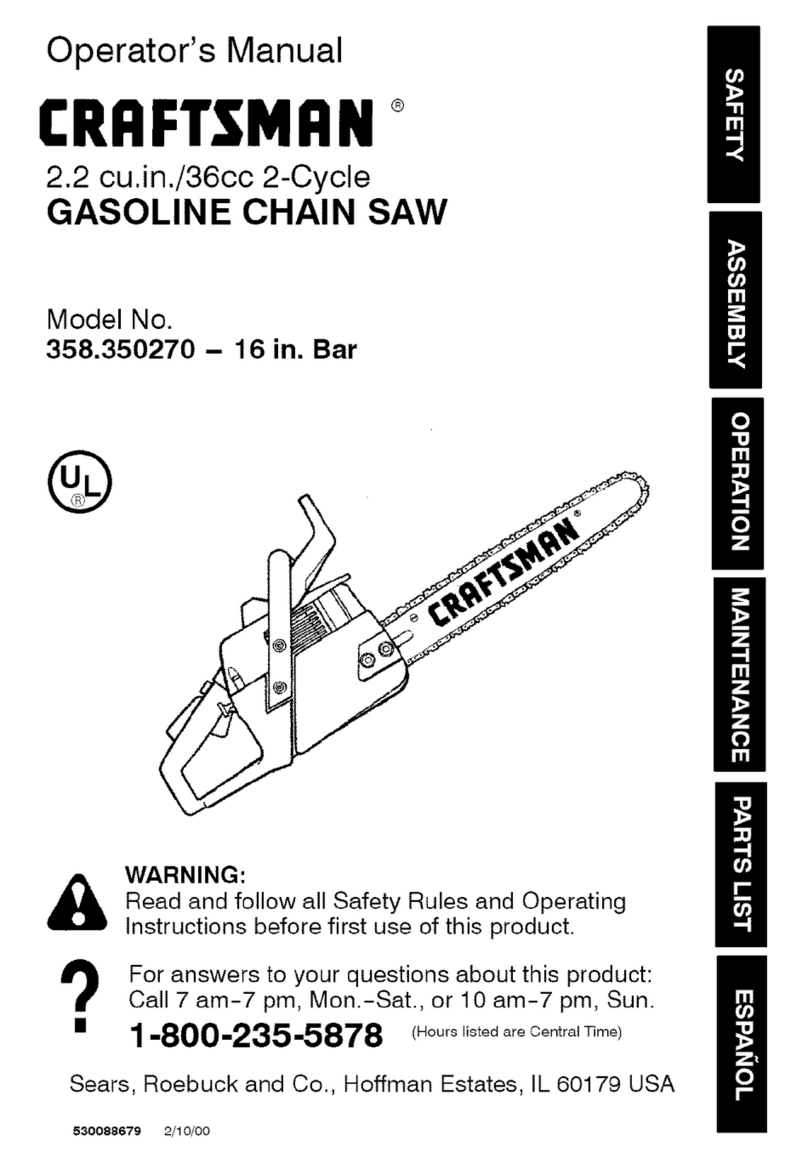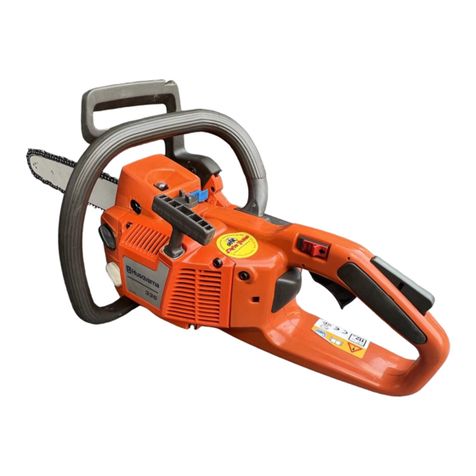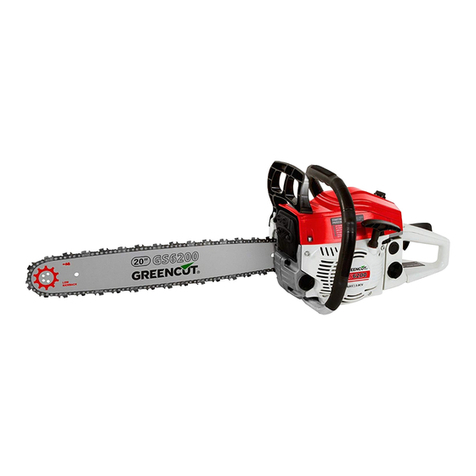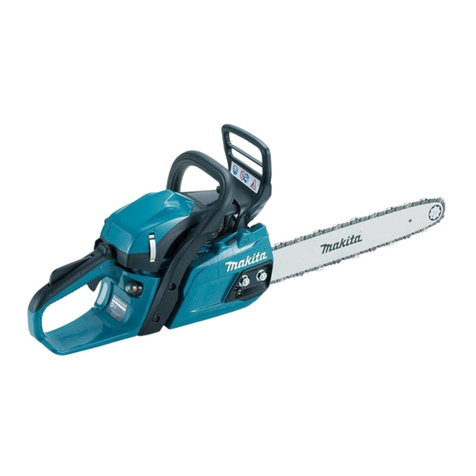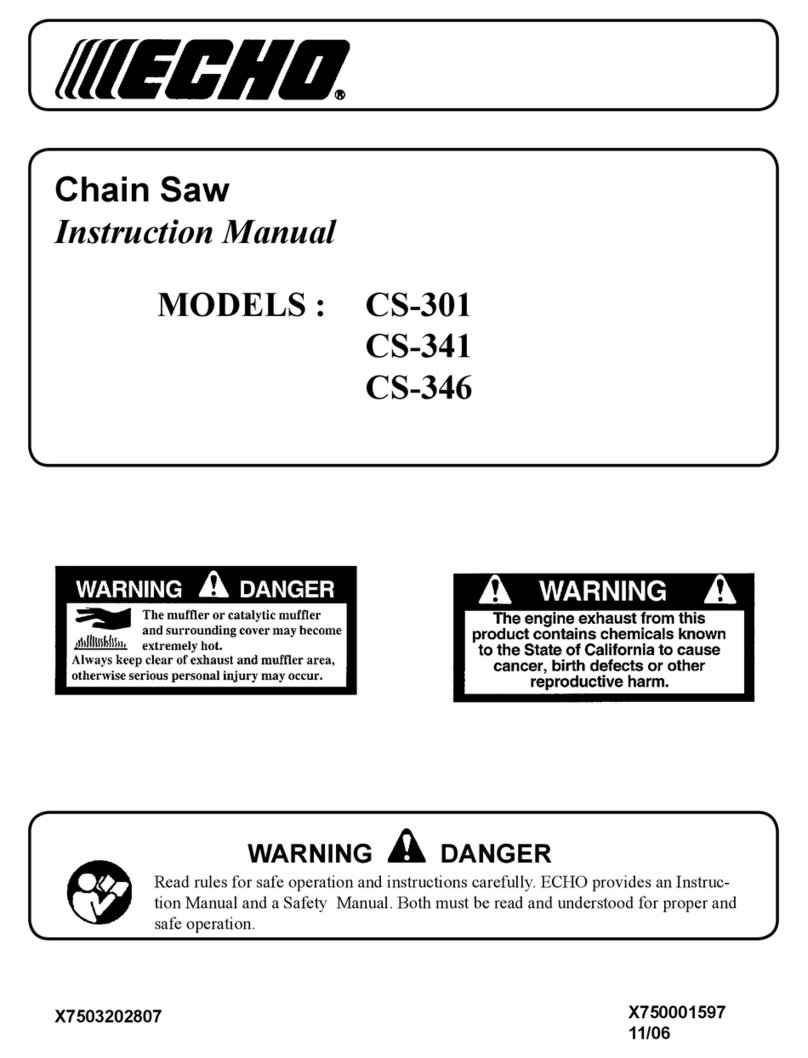
STIHL 019 T 2
1. INTRODUCTION
This service manual contains detailed
descriptions of all the repair and
servicing procedures specific to this
series of chainsaws There are separate
handbooks for servicing procedures on
standardized parts and assemblies that
are installed in several STIHL power
tool models. Reference is made to
these handbooks in the appropriate
chapters of this manual.
You should make use of the illustrated
parts lists while carrying out repair
work. They show the installed positions
of the individual components and
assemblies.
Always use the latest edition of the
parts list to determine the part numbers
of any replacement parts required.
Microfilmed parts list are always more
up to date than printed lists.
A fault on the machine may have
several causes. Consult the
troubleshooting charts for all
assemblies in the "Standard Repairs,
Troubleshooting" handbook.
Refer to the "Technical Information"
bulletins for engineering changes which
have been introduced since publication
of this service manual. Technical
information bulletins also supplement
the parts list until a revised edition is
issued.
Special servicing tools mentioned in
the descriptions are listed in the last
chapter of this manual. Use the part
numbers to identify the tools in the
"STIHL Special Tools" manual. The
manual lists all special servicing tools
currently available from STIHL.
Symbols are included in the text and
pictures for greater clarity. The
meanings are as follows:
In the descriptions:
• = Action to be taken as shown in
the illustration (above the text)
- = Action to be taken that
is not shown in the illustration
(above the text)
In the illustrations:
P= Pointer
= Direction of movement
Service manuals and all technical
information bulletins describing
engineering changes are intended
exclusively for the use of STIHL
servicing dealers. They must not be
passed to third parties.
Servicing and repairs are made
considerably easier if the powerhead
is mounted to the assembly stand (1)
5910 890 3100.
This enables the powerhead to be
swivelled to the best position for the
ongoing repair and leaves both hands
free.
It is secured with the bar mounting
stud after removing the chain sprocket
cover and tensioner.
Always use original STIHL
replacement parts. They can be
identified by the STIHL part number,
the
STIHL
STIHLSTIHL
STIHL
logo and the STIHL
parts symbol
(
The symbol may
appear alone on small parts.
